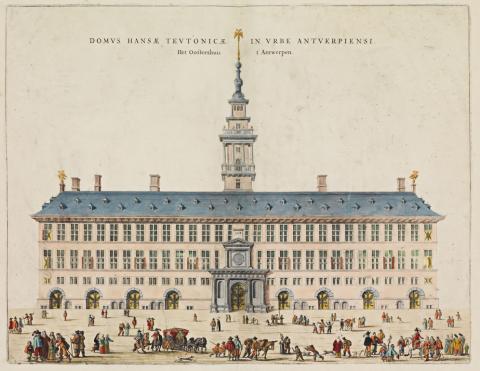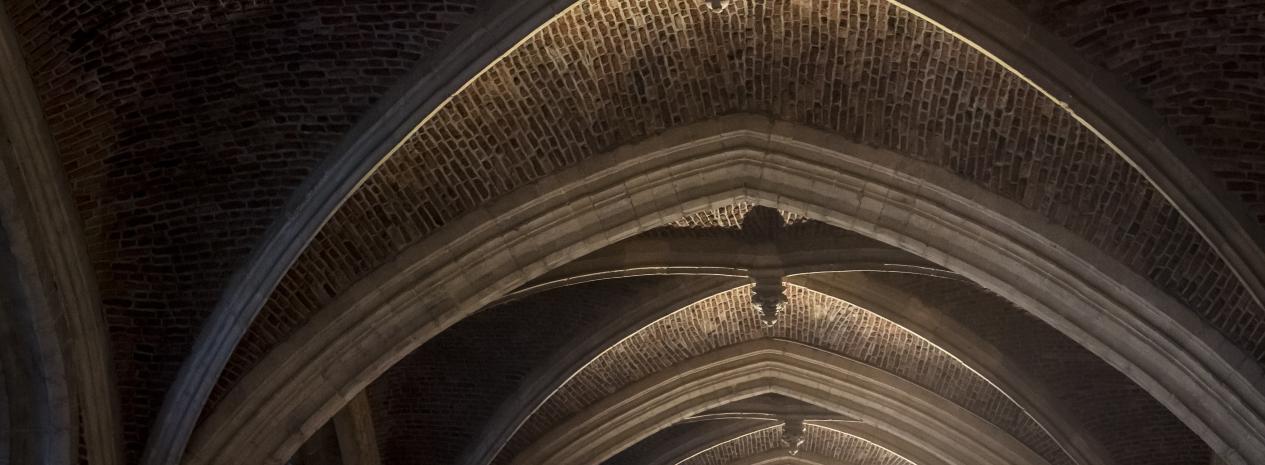The largest recorder
This recorder is not called a great bass recorder for nothing. Its dimensions are huge: the instrument is more than 2.5 metres long. It is the only preserved Renaissance recorder of this size in the world. Whereas the lowest note of the contrabass recorder is usually an F, this recorder was extended to a quarter lower (lowest note C).


Hansa House
The contrabass recorder was once part of a relatively large collection of around 60 instruments played for and by the German merchants of the Hansa House in Antwerp. In 1865, Mr. Flemmich, the consul and last representative of the Hanseatic League, donated the instrument to the city of Antwerp.
There are several historical sources that appear to refer to the recorder. For example, when Charles Burney travelled through Antwerp in the 18th century, he wrote in his travelogue that there were around 30 or 40 recorders in the Oosterhuis (Hansa House). He believed that these would have been used more than a hundred years prior. There is also an inventory of the Hansa House from 1602 that refers to recorders. This inventory may have been of the collection of which this recorder was part. Presumably this recorder was already present in the Hansa House between 1570 and 1590.
 Collectie Stad Antwerpen, Museum Vleeshuis | Klank van de Stad
Collectie Stad Antwerpen, Museum Vleeshuis | Klank van de Stad
Museum piece
At the end of the 19th century, the recorder was exhibited in the music room at the Museum of Antiquities in Het Steen (photo).
Two copies of the instrument were made in 1881, one of which went to the Musical Instrument Museum of Brussels. The other copy ended up in the private collection of Mary Elizabeth Adams. She donated her collection, the Crosby Brown Collection (named after her husband), to the Metropolitan Museum of Art in New York in 1889.
The original instrument was restored in 1961 by Martin Skowroneck, who installed new keys, among other things.
Haunting sounds
The period 1500 - 1650 was a golden age for the recorder. The instrument enjoyed huge popularity among both professional musicians and amateur circles, because its sound imitated the human voice. At the same time, the idea to bring instruments together in homogeneous groups or 'consorts' emerged during this period, and that included the recorder. These consorts initially performed mainly vocal repertoire on the instruments, gradually adding dances and instrumental works that imitated vocal music.
An Antwerp newspaper article from 1976 described the sound of the contrabass recorder as follows (freely translated): "That huge instrument is not intended to have solos played on it. It produces supporting sounds at a concert. Soft "haunting sounds" we would say."
Flemish masterpiece
The great bass recorder is one of our masterpieces and is on the Flemish Masterpiece List.


